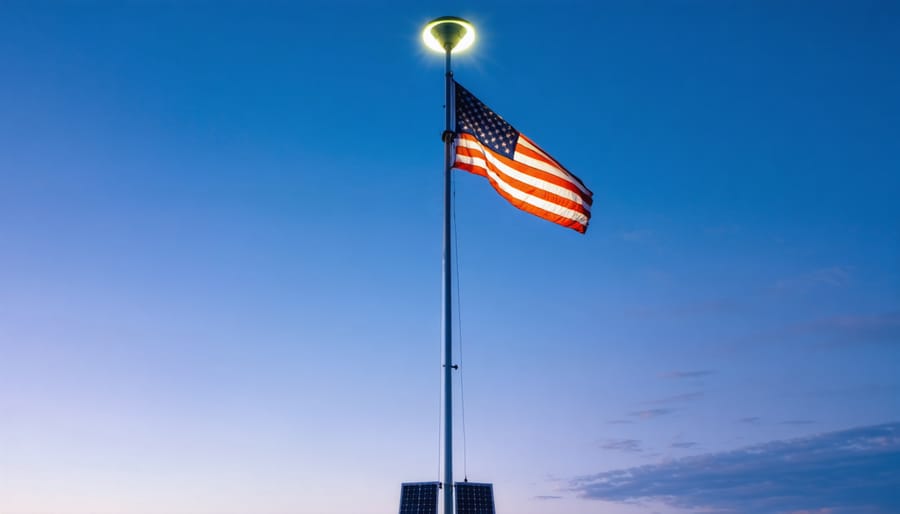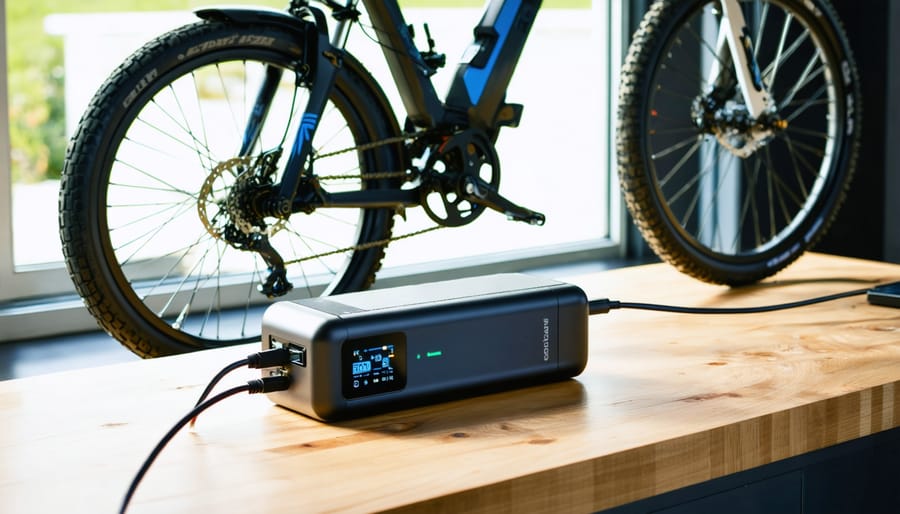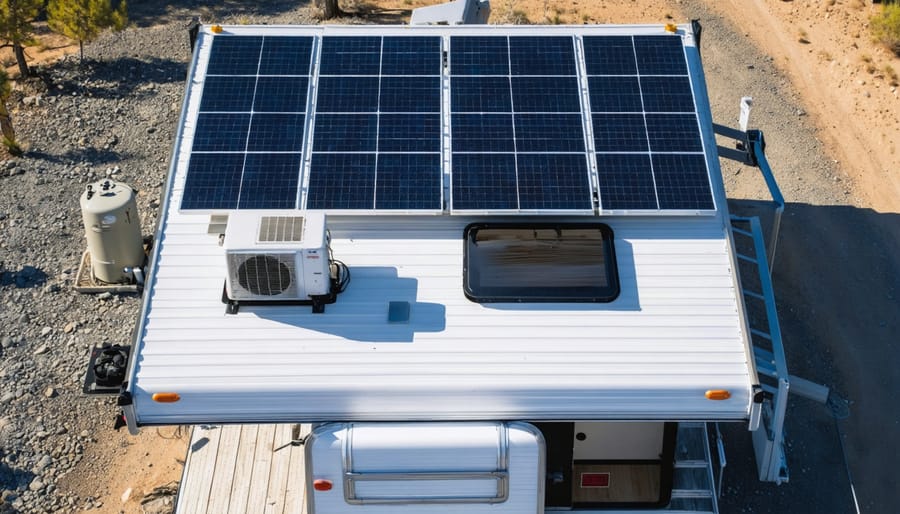What Size Generator to Run Air Conditioner
Updated:

Choosing the right generator size to run an air conditioner depends primarily on two factors: the power requirements of the air conditioner, particularly at startup, and the generator’s power output.
This article will guide you through understanding these requirements, including a special focus on solar generators for RV use, and provide a step-by-step process for selecting the right generator size for your RV’s air conditioner.
How Much Power Does an RV Air Conditioner Need?

Before deciding on a generator, it’s crucial to understand how much power your RV’s air conditioner needs. The power needs of an RV air conditioner are typically measured in Watts and Amps, with different requirements for running and startup power.
The power used by any air conditioning unit, whether a central air conditioner or a window air conditioner, primarily depends on its cooling capacity, measured in BTUs (British Thermal Units) or tons. A 1-ton AC has a BTU rating of 12,000.
In simple terms, the higher the cooling power, or BTU rating, the more electricity the air conditioner needs.
Generally, typical RV air conditioners have a BTU rating of 13,500 or 15,000, which translates to a running wattage of around 1300-1500 Watts. The surge or starting wattage, the power drawn when the unit is first turned on, is about 6000-7000 Watts.
For larger RVs, such as Class A RVs, the ac units are typically rated at 27,000 BTUs and use 3000 watts of power when running, requiring up to 13,000 Watts to start.
Here’s a table that provides estimates of the power and current requirements of RV air conditioners based on their BTU ratings:

The starting wattage represents the power that the RV AC unit needs to start. This power surge usually lasts less than a second but should be considered when sizing equipment, specifically inverters.
The Average Running Wattage values provided in the table are still estimates. The actual power usage of your RV AC will depend not only on its capacity but also on the specific model and its efficiency.
What Does Generator Size Mean?
The size of a Generator refers to how many watts of electrical power it can produce. A generator with a higher wattage rating can have more power and run more appliances.
Two important concepts about generator size are Continuous Output and Peak Output.
- Continuous Output is the power output that the total draw of your appliances should remain below.
- Peak Output is the power the generator can produce for a short burst, typically when the appliance starts.

Depending on the layout and needs of your RV, you could choose between a built-in generator (also known as Genset) or a portable generator.
- Built-in generators are connected to the onboard fuel source, and the output is connected to the RV’s 110-volt electrical system.
- Portable generators require external energy, such as fuel or solar energy, to work. They also need to be plugged in to provide the generated electricity to your appliances.
The electrical output of RV generators typically ranges from 2.5 to 17 kilowatts (2,500 to 17,000 watts).
Remember, you should always choose a generator size that exceeds your current power needs. This will allow you to add a few more appliances later.
Can a Solar Generator Power an Air Conditioner?
Solar generators can indeed power air conditioners, including those used in RVs.
However, this portable generator’s capacity and the air conditioner’s power requirement are crucial factors. Air conditioners require a significant amount of energy to operate.
Your selected solar generator must be able to provide the necessary running and surge power to the air conditioner.
Solar generators work by using solar panels to capture sunlight. This sunlight is then converted into electricity and stored in a battery. It can run your RV’s air conditioner, lights, and other appliances.
So, another important factor when selecting a solar generator for powering your AC is the battery capacity, typically measured in watt-hours (Wh) or kilowatt-hours (kWh). The larger the capacity of the solar generator, the longer it can provide power to run your appliances.
Other factors that affect the runtime of solar generators include:
- The capacity of the solar panels in the solar generator
- The wattage requirements of the air conditioner and other appliances
- The amount of available sunlight for recharging the generator’s batteries
When selecting a solar generator, consider factors like its recharging time, whether it offers charging from an AC input like a backup generator or shore power, and whether its capacity can be expanded by adding more solar panels.
These considerations impact the generator’s ability to power your air conditioner and its utility and versatility.
Calculating the Right Size Solar Generator for Your RV Air Conditioner
Choosing the right generator involves understanding your RV air conditioner’s power requirements and the generator’s capacity to meet these needs.
Here’s a simplified guide:
Step 1 – Identify Your AC Power Requirements
First, determine how much power your RV air conditioner consumes. This information is usually indicated on the air conditioner or its manual. You’ll often see the power rating in terms of watts or amps.
If you only have the amperage, multiply this by the voltage (generally 120V for RV appliances) to get the wattage.
Step 2 – Factor in Starting and Running Wattage
Most air conditioners need more power to start up than to run continuously. This peak power, or starting wattage, can be 3-7 times higher than the running or continuous wattage.
Both these values are essential when choosing your solar generator. Your generator must meet the peak power requirements to start the appliance and the continuous power requirements to keep it running.
For example, see the following manufacturer label on an AC.

The label shows that the AC runs at 230 V. It also provides three types of current ratings. The Full Load Amps (FLA) and Running Load Amps (RLA) currents provide the running amperage of the AC fan and compressor. The Locked Rotor Amps (LRA) current provides the current needed to start the AC.
To calculate your AC’s running and surge power, simply add the compressor and fan currents and multiply the result by the running voltage.
So, for the example above:
\(Running\ wattage = 230\ V * (1.9\ A + 27.1\ A) = 6670\ W = 6.67\ kW \)
\(Starting\ wattage = 230\ V * (144\ A + 3.7\ A) = 33.97\ kW \)
Step 3 – Calculate the Total Power Needs of Your RV
List all the appliances you’ll use, and find their starting and running wattages. To calculate the total power needed, separately sum all your appliances’ surge and running wattage.
For example, suppose you’re running a 7,000 BTU air conditioner (2,500 starting watts, 700 running watts), a microwave (1,000 starting and running wattage), and a refrigerator (600 starting wattage, 180 running wattage). In that case, you’ll need a generator that can produce at least 4,100 starting watts and 2,350 running watts.
Step 4 – Apply a Safety Factor
Choosing a generator slightly bigger than your calculated power needs is a good idea as a rule of thumb. So, multiply the total power requirement of your generator with a safety factor (typically 1.25) to get the size of the generator you should get.
This gives you room to run essential appliances along with the AC and prevents your generator from running at full load.
For the example above, applying the safety tells you you should get a generator that can provide 5125 watts of surge power and 2350 watts of running power.
Step 5 – Select a Solar Generator Model
Finally, select a solar generator model to provide your RV with the necessary surge and running power. For example, if you have to choose between two models with the following peak and running powers:
- Model 1: Running Power: 2500 watts, Peak Power: 5000 watts
- Model 2: Running Power: 3000 watts, Peak Power: 6000 watts
You should choose Model 2 since it satisfies both the running and surge power requirements, while Model 1 only satisfies the running power requirement.
However, remember that a solar generator’s power output can be affected by weather conditions. It is prudent to have a backup standby generator, such as a traditional one, for cloudy or rainy days when solar power production is lower.










